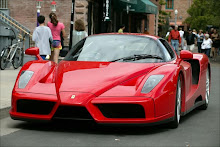
By Erin McCarthy
Published in the March 2008 issue of Popular Mechanics.
When it comes to status symbols, nothing beats a circle. There is a global race to create the biggest Ferris wheel, and while these attractions are built for fun, the stakes are serious. “These wheels have almost replaced the skyscraper as icons,” says Dennis Speigel, president of the consulting firm International Theme Park Services. When the Singapore Flyer makes its debut this month, it will be the world’s tallest, at 165 meters — at least until late 2008, when the Great Dubai Wheel (185 meters tall) opens. In 2009, the Beijing Great Wheel (208 meters tall) will surpass both.
Click on image below for enlarged version.

The larger these monstrous rides become, the greater their capacity and potential profit—and the more seriously builders take them. For starters, they don’t call them Ferris wheels. “We categorize them as ‘observational wheels’ because of the capsules,” says Alexander Pieper, spokesman for the Great Wheel Corporation, which developed the Singapore, Dubai and Beijing wheels.
To keep the floor horizontal, motors turn each bus-sized glass capsule 360 degrees in one direction while the rim rotates a full revolution in the other. Unlike typical rigid Ferris wheels, observational wheels have cables tensioned like the spokes of a bicycle wheel. The slow speed allows passengers to enter and exit while the wheel stays in motion.

No comments:
Post a Comment